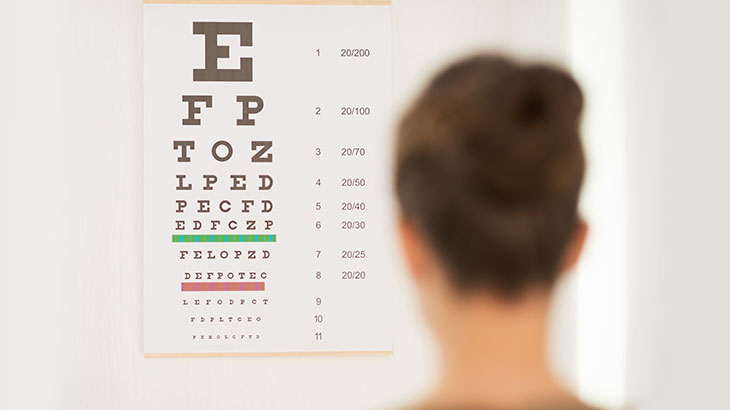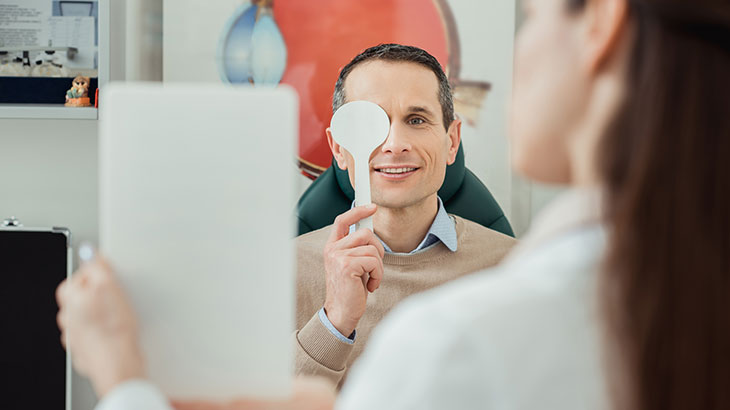28.11.2023
For those who have taken a driving test, you will be aware of the obligatory ‘Can you read that numberplate over there?’ question. This is to check whether you can read a numberplate registered after 1st September 2001 from 20m. However, there is a lot more to it than that.
When you go for an eye test, you will have been asked to read a chart with a few lines of letters on- called the Snellen Scale. ‘Perfect’ eyesight is called 20/20 or 6/6 vision and the legal minimum for driving is 6/12 vision or 20/40 vision. People with 6/6 vision can read a line of letters at double the distance of those with 6/12 vision (12 metres rather than 6 metres). However, you can use glasses or contact lenses to ensure both eyes or just one eye (if you only have vision in one eye) meet the legal minimum.

You must also have an uninterrupted field of vision- at least 160 degrees with an extension of 70 degrees to the left and 70 degrees to the right as well as 30 degrees up and 30 degrees down.
As well as ensuring you meet the legal requirements, it’s important to have your eyes checked for optical conditions which can affect your vision whilst driving. Not only is it important from a safety perspective, you could also face a £1000 fine if you do not declare a medical condition that could affect your eyesight to the DVLA and you could be prosecuted if involved in an accident.

Driving in the dark brings its own challenges but especially for those with astigmatism. Although a fairly common and mild condition, it causes the eyeball to change to a rugby ball shape rather than being spherical. Whilst driving, this change in the shape of your eyeball will cause glare around lights in the dark. This can be corrected with certain anti-glare lenses or contact lenses but make sure you get advice from an optician first.

Another condition your optician will check for is cataracts as they are cloudy patches in the eye which can cause blurry vision or blindness. Cataracts will get worse over time and eventually the lens of your eye will have to be removed and replaced.
It is important to remember that these are the legal requirements for driving a car and that bus or lorry drivers must follow much more stringent rules.